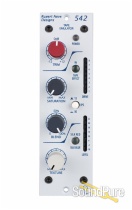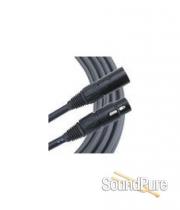-
Call Us Toll Free888-528-9703
-
Local/International (+1)919-682-5552
- Call Us! Toll Free! 888-528-9703
- Local / International (+1) 919-682-5552

Rupert Neve Designs Portico 5042 Tape Emulation From Neve
From Rupert Neve Designs' Portico series: 5042 - True Tape Emulation and Line Drive
Manufacturer's Description from Neve
The 5042, winner of the 2006 TEC award for signal processing hardware, provides a remarkable simulation of true tape sound through the inclusion of genuine tape drive circuitry. When the Tape circuit is not engaged, the 5042 may be used as a full, transformer-coupled, high-performance line amplifier that includes a Gain range of + and – 12 dB. The Portico 5042 Two Channel “True Tape” Emulation and Line Driver unit’s emulation circuit provides the nostalgic rounding and compression usually only achieved by the use of tape. This typically offsets the harshness often found in digital recordings. The Portico 5042 incorporates an actual tape drive circuit that feeds a tiny magnetic “head” which, in turn, is coupled to a correctly equalized, replay amplifier. The only thing missing is the tape itself!
The Portico 5042 consists of two identical Line Driving amplifiers having transformer balanced inputs and outputs. The sonic quality of these amplifiers is such that, by providing galvanic isolation, simple single-sided circuit topology and freedom from grounding problems they are capable of enhancing the sonic quality of many signal sources, especially those of digital origin. The sonic “signature” is one of extreme purity and the image is consistent with that of Rupert Neve’s original designs of 35-40 years ago.
The Portico 5042 host line amplifier has a much higher output level capability than the “tape” circuit embodied within it. The gain of the Record and Replay amplifiers has been adjusted so that with the TRIM control set to 0 dBu, and the ENGAGE TAPE button out, an incoming signal of 0 dBu, will cause the first meter LED to illuminate.
Now, with the ENGAGE TAPE button pressed and the SATURATION control at MIN, the same first meter LED will continue to light regardless of whether the meter button is set to INPUT LEVEL or TAPE LEVEL. This is the minimum recommended record level. When the SATURATION control is rotated to MAX, this is the maximum recommended record level.
An input signal level that is appreciably below 0 dBu (the 0 dB LED on the meter not lighting at all), for example, if you are feeding the Portico 5042 from a consumer Hi-Fi source, the tape effect still works but you might have to make up gain elsewhere in your system. Of course this would tend to bring up noise, just as it would on a real tape recorder.
If the incoming signal is low, (for example from a consumer Hi-Fi source), it is recommended that you rotate the TRIM control clockwise to bring the incoming signal level up to the point where the first, or LINE UP LED is just illuminated. However, with the meter switched to TAPE LEVEL, when you rotate the SATURATION control clockwise the TAPE LEVEL meter progressively illuminates. At MAX, with an incoming 0 dBu signal, the Tape circuit is running just below clipping point.
Main Outputs
The main output signals come from the output transformer secondary which is balanced and ground free. A ground-free connection ensures virtual freedom from hum and radio frequency interference due to ground loops. Ideally the output of this module should be fed to a balanced destination such as the input to another Portico module or one of the many high quality vintage modules still in current use. The main outputs may be used with one leg grounded without any change in performance.
Maximum output level of the Portico 5042 is + 25 dBu, which provides a large margin over and above the likely maximum requirement of any destination equipment to which the Portico 5042 is connected.

About Manufacturer
Specifications
| Noise: | ||
|
||
|
Better than 100 dBu. | |
| Frequency Response: | ||
|
||
|
@ 10 Hz. | –0.50 dB |
| @ 160 kHz | –3 dB | |
| Maximum Output Level: | ||
|
+25 dBu. | |
| Total Harmonic Distortion and Noise: | ||
|
Better than 0.0015%. | |
|
0.250% typical. Mostly 2nd and 3rd Harmonic | |
| Crosstalk: | ||
|
Better than 90 dB @ 16kHz | |
| Buss Output: | ||
|
||
| Maximum Output Level: | ||
|
+25 dBu | |
|
+6 dBu | |
| Noise: | ||
Measured at Main Output, un-weighted, 400Hz-22kHz, input terminated 40 Ohms Balanced |
||
|
Better than –70 dBu | |
|
Better than –90 dBu | |
| Frequency Response: | ||
Tape engaged, 7.5 IPS |
-3 dB @ 16 kHz | |
|
-3 dB @ 20 kHz | |
|
||
| Total Harmonic Distortion and Noise: | ||
|
Approximately 1-2% 2nd and 3rd Harmonic below 1 kHz | |
| Crosstalk: | ||
|
Better than 80 dB @ 16kHz | |















